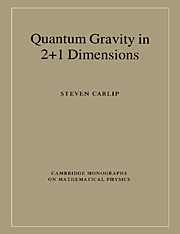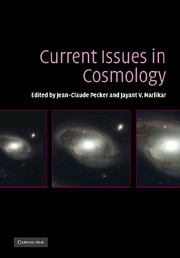Refine listing
Actions for selected content:
17000 results

A Tapestry of Orbits
-
- Published online:
- 18 December 2009
- Print publication:
- 29 October 1992
5 - Mars tectonics
-
-
- Book:
- Planetary Tectonics
- Published online:
- 30 March 2010
- Print publication:
- 17 December 2009, pp 183-232
-
- Chapter
- Export citation
10 - Fault populations
-
-
- Book:
- Planetary Tectonics
- Published online:
- 30 March 2010
- Print publication:
- 17 December 2009, pp 457-510
-
- Chapter
- Export citation
Contents
-
- Book:
- Planetary Tectonics
- Published online:
- 30 March 2010
- Print publication:
- 17 December 2009, pp v-vi
-
- Chapter
- Export citation
Plates
-
- Book:
- Planetary Tectonics
- Published online:
- 30 March 2010
- Print publication:
- 17 December 2009, pp -
-
- Chapter
- Export citation
1 - Planetary tectonics: introduction
-
-
- Book:
- Planetary Tectonics
- Published online:
- 30 March 2010
- Print publication:
- 17 December 2009, pp 1-14
-
- Chapter
- Export citation
Frontmatter
-
- Book:
- Planetary Tectonics
- Published online:
- 30 March 2010
- Print publication:
- 17 December 2009, pp i-iv
-
- Chapter
- Export citation
8 - Planetary structural mapping
-
-
- Book:
- Planetary Tectonics
- Published online:
- 30 March 2010
- Print publication:
- 17 December 2009, pp 351-396
-
- Chapter
- Export citation
List of contributors
-
- Book:
- Planetary Tectonics
- Published online:
- 30 March 2010
- Print publication:
- 17 December 2009, pp vii-x
-
- Chapter
- Export citation
2 - The tectonics of Mercury
-
-
- Book:
- Planetary Tectonics
- Published online:
- 30 March 2010
- Print publication:
- 17 December 2009, pp 15-80
-
- Chapter
- Export citation
9 - Strength and deformation of planetary lithospheres
-
-
- Book:
- Planetary Tectonics
- Published online:
- 30 March 2010
- Print publication:
- 17 December 2009, pp 397-456
-
- Chapter
- Export citation
Index
-
- Book:
- Planetary Tectonics
- Published online:
- 30 March 2010
- Print publication:
- 17 December 2009, pp 511-518
-
- Chapter
- Export citation
Preface
-
-
- Book:
- Planetary Tectonics
- Published online:
- 30 March 2010
- Print publication:
- 17 December 2009, pp xi-xii
-
- Chapter
- Export citation
4 - Lunar tectonics
-
-
- Book:
- Planetary Tectonics
- Published online:
- 30 March 2010
- Print publication:
- 17 December 2009, pp 121-182
-
- Chapter
- Export citation
6 - Tectonics of small bodies
-
-
- Book:
- Planetary Tectonics
- Published online:
- 30 March 2010
- Print publication:
- 17 December 2009, pp 233-263
-
- Chapter
- Export citation
7 - Tectonics of the outer planet satellites
-
-
- Book:
- Planetary Tectonics
- Published online:
- 30 March 2010
- Print publication:
- 17 December 2009, pp 264-350
-
- Chapter
- Export citation
3 - Venus tectonics
-
-
- Book:
- Planetary Tectonics
- Published online:
- 30 March 2010
- Print publication:
- 17 December 2009, pp 81-120
-
- Chapter
- Export citation

The Expanding Universe
- Astronomy's 'Great Debate', 1900–1931
-
- Published online:
- 15 December 2009
- Print publication:
- 02 July 1920

Quantum Gravity in 2+1 Dimensions
-
- Published online:
- 15 December 2009
- Print publication:
- 02 July 1998

Current Issues in Cosmology
-
- Published online:
- 15 December 2009
- Print publication:
- 01 June 2006
